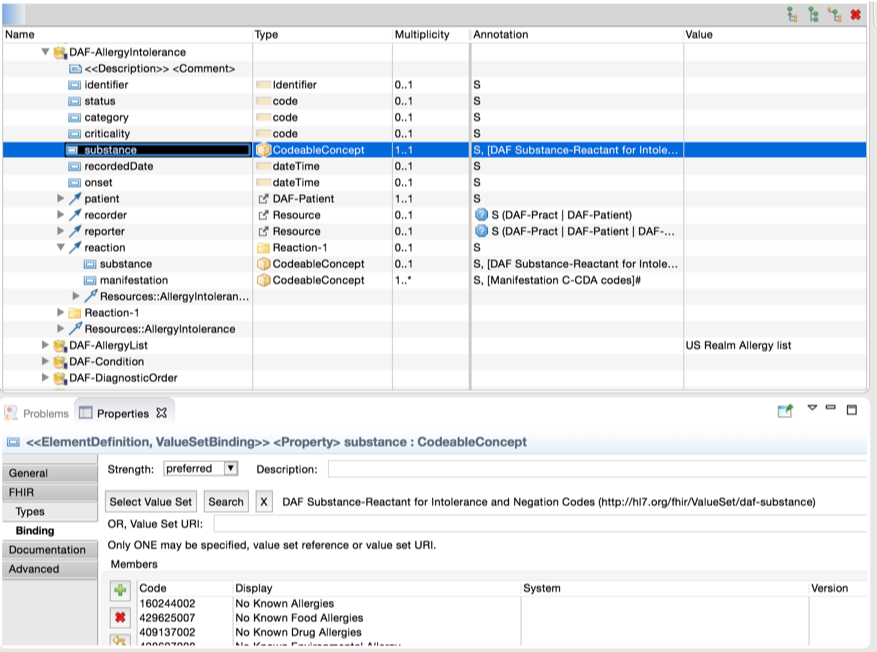Implementation content is derived from the FHIM. The content generated by the implementation work stream is UML models and profiles defining FHIM templates, implementation guides, and APIs. An example of a UML model and profile (as displayed by the MDHT software) can be seen below. The UML model defines the structural representation of the FHIM template expressed as a target implementation (e.g., CDA , FHIR, etc.) and the corresponding UML profile defining required metadata to support the target platform. UML profiles are used for multiple purposes:
- To bind UML structures to value set information
- To define constraints properties (CDA severity level and rule id)
The foundational information in the FHIM is constrained to create data structures and semantics for a specific implementation.

